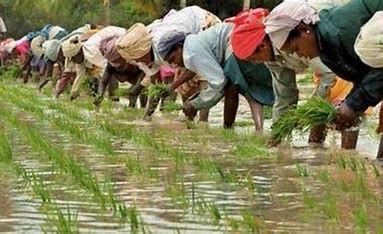UPSC Daily Current Affairs- 27th March 2024 | Current Affairs & Hindu Analysis: Daily, Weekly & Monthly PDF Download
GS-I
Monuments of National Importance (MNI)
Subject: Art and Culture
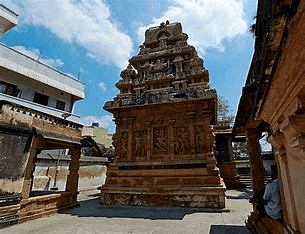
Why in News?
The Archaeological Survey of India (ASI) recently decided to remove 18 protected monuments from the list of Monuments of National Importance as they are no longer considered to be of national significance.
About Monuments of National Importance (MNI)
- The Ancient Monuments and Archaeological Sites and Remains Act (AMASR Act) of 1958, amended in 2010, aims to identify and conserve ancient and historical monuments, archaeological sites, and remains that hold national importance.
- Uttar Pradesh has the highest number of such monuments and sites, totaling 745.
Declaration Process
- Following a review of views and objections within the designated period, the Central Government can declare an ancient monument as being of national importance through an official notification in the gazette.
Responsibilities and Actions
- Upon designation as Monuments of National Importance, the Archaeological Survey of India, operating under the Ministry of Culture, assumes responsibility for the protection and maintenance of these sites.
- ASI is tasked with conserving, preserving, and caring for Monuments of National Importance across the nation.
Protected Areas
- Monuments designated as MNIs have a restricted area extending one hundred meters around them, where construction activities are prohibited.
- An additional regulated area, spanning from 100 to 200 meters, imposes specific construction regulations.
Delisting Process
- Under Section 35 of the Act, ASI holds the authority to remove monuments from the list of national importance if they are deemed to have lost their significance.
- Once a monument is delisted, ASI is no longer responsible for safeguarding it.
Source: India Today
Magnetofossils
Subject: Geography

Why in News?
In the depths of the Bay of Bengal, researchers have unearthed a 50,000-year-old sediment containing a significant magnetofossil, one of the most recent discoveries of its kind.
About Magnetofossils:
- These are remnants of magnetic particles formed by magnetotactic bacteria, or magnetobacteria, preserved within geological records.
What are Magnetotactic Bacteria?
- Primarily prokaryotic organisms that align themselves with Earth's magnetic field.
- Believed to utilize the magnetic field for navigating to regions with optimal oxygen levels.
- Contain distinct iron-rich particles in sacs, functioning as a compass.
- Create small crystals of magnetite or greigite to adapt to varying oxygen levels in their aquatic habitat.
Key Findings of the Study:
- A three-meter sediment core from the Bay of Bengal contained predominantly pale green silty clays.
- Abundant benthic and planktic foraminifera, single-celled organisms with shells, were discovered in the sample.
- At depths of 1,000-1,500 meters, the Bay of Bengal exhibited notably low oxygen levels.
- Analysis confirmed monsoon-related fluctuations, indicated by magnetic mineral particles from distinct geological eras.
- Rivers like Godavari, Mahanadi, Ganga-Brahmaputra, Cauvery, and Penner played a vital role in magnetofossil formation.
- Nutrient-rich sediment carried by these rivers provided reactive iron, fostering a conducive environment for magnetotactic bacteria growth.
- Combined river discharge and oceanographic processes sustained unique oxygen levels in the Bay of Bengal.
- The presence of magnetofossils signifies prolonged suboxic conditions, supporting the thriving of magnetotactic bacteria.
Source: The Hindu
The Chalukyan Dynasty
Subject: Art and Culture
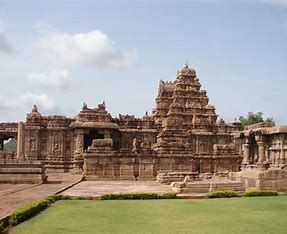
Why in News?
A recent discovery of a 900-year-old Kannada inscription from the Kalyana Chalukya dynasty sheds light on ancient history.The inscription found in Gangapuram, Telangana, dated June 8, 1134 CE, records remission of toll taxes for religious purposes.
Origin and Expansion of the Chalukyas
The Chalukyas rose to prominence in the 6th century CE with their capital at Badami, Karnataka.
- Pulakeshin I, the dynasty's founder, expanded the empire by defeating neighboring kingdoms like the Kadambas and Mauryas.
- Pulakeshin II, a notable ruler, significantly expanded the empire through military conquests and alliances.
- The empire reached its peak under Pulakeshin II, covering regions in Southern and Central India.
Dynastic Divisions
The Chalukyan Empire saw the rise of branches like the Badami Chalukyas, Western Chalukyas, and Eastern Chalukyas.
- The Badami Chalukyas were known for their cultural contributions from Badami.
- The Western Chalukyas, centered in Kalyani, expanded their rule over parts of Karnataka and Maharashtra.
- The Eastern Chalukyas, based in Vengi, played a vital role in South India's politics.
Religion and Cultural Influence
The Chalukyas were patrons of art, literature, and architecture, promoting Hinduism while supporting Jainism and Buddhism.
- They constructed temples like the Virupaksha Temple at Pattadakal and sponsored Jain caves and monasteries.
- Cultural figures like Pampa and Ranna contributed significantly to literature during this era.
Decline and Legacy
- Internal conflicts and external invasions led to the decline of the empire from the 12th century onwards.
- The defeat of Vikramaditya VI by the Cholas marked the end of the Western Chalukya dynasty.
Administration and Arts
The empire was administratively divided into Rashtras and Mandalas, with a sophisticated revenue system.
- Art and culture thrived under Chalukyan patronage, with notable examples in sculpture and literature.
- Architectural marvels like the Virupaksha Temple at Pattadakal and the Durga Temple at Aihole showcase the empire's cultural richness.
Source: Indian Express
GS-II
National Assessment and Accreditation Council (NAAC)
Subject: Polity and Governance

Why in News?
The National Assessment and Accreditation Council (NAAC) has decided to introduce a binary categorisation of "accredited" or "not accredited" for higher educational institutions.
About National Assessment and Accreditation Council (NAAC)
- Autonomous body of the University Grants Commission (UGC), under the Ministry of Education.
- Established in 1994 following the recommendations of the National Policy of Education, 1986.
- Headquartered in Bengaluru.
Function
- Evaluation, assessment, and accreditation of Higher Education Institutions (HEIs) in the country.
- Assessment involves a performance evaluation based on self-study and peer review using defined criteria.
- Accreditation is the certification given by NAAC, valid for five years.
- Institutions are rated from A to C, with D indicating lack of accreditation.
Eligibility Criteria
- HEIs must have a record of at least two batches of graduates or six years of existence to apply for Assessment and Accreditation (A&A) by NAAC.
- Voluntary basis for Assessment and Accreditation currently.
Assessment Criteria
NAAC uses seven criteria for assessment:
- Curricular aspects
- Teaching-learning and evaluation
- Research, Consultancy, and extension
- Infrastructure and learning resources
- Student support and progression
- Governance and leadership
- Innovative practices
Composition
- Operates through its General Council (GC) and Executive Committee (EC).
- Comprised of educational administrators, policymakers, and senior academicians.
- Chairperson of UGC serves as President of the GC of NAAC.
Source: New Indian Express
Armed Forces (Special Powers) Act (AFSPA)
Subject: Polity and Governance
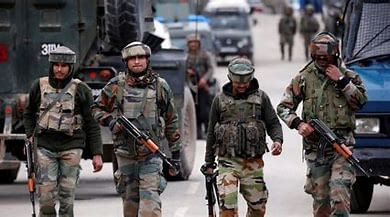
Why in News?
The Union Home Minister recently said the Central Government will consider revoking the Armed Forces (Special Powers) Act in Jammu and Kashmir.
About AFSPA
- Overview: The Armed Forces (Special Powers) Act (AFSPA) was established by the Indian Parliament in 1958 to grant special powers and immunity to the armed forces for maintaining public order in areas deemed as "disturbed."
- Application Criteria: AFSPA is enforced only after a region is marked as "disturbed" under section 2 of the Act.
- Definition of a Disturbed Area: A region can be classified as disturbed due to conflicts or disagreements among various religious, racial, linguistic, or regional groups, as well as castes or communities.
- Declaration of Disturbed Areas: The authority to declare a state or union territory, either wholly or partially, as disturbed lies with the Central Government, State Governor, or Union Territory Administrator.
- Conditions for Implementation: AFSPA can be invoked in locations where "the use of armed forces in aid of the civil power is necessary."
- Special Powers Granted: The armed forces under AFSPA possess certain special powers, including the ability to disallow gatherings of five or more individuals in an area, use force or employ firearms after issuing a warning if they suspect a violation of the law.
- Additional Powers: In case of reasonable suspicion, the military can make arrests without warrants, conduct searches of premises without warrants, and prohibit firearm possession.
- Legal Procedures: Individuals detained can be transferred to the nearest police station along with a comprehensive report justifying the arrest. Furthermore, these armed forces are shielded from prosecution unless authorized by the Union Government.
- Current Application: Presently, besides Nagaland, AFSPA is operational in Jammu and Kashmir, Assam, Manipur (excluding Imphal), and Arunachal Pradesh.
Source: NDTV
Ex-parte Injunction
Subject: Polity and Governance

Why in News?
The Supreme Court emphasized the rarity of ex-parte injunctions in news article publication cases, allowing them only in exceptional circumstances.
- Definition: An ex-parte injunction is a court order issued without hearing the other party, also known as a temporary restraining order.
- Usage: Given in emergencies where immediate action is crucial to prevent irreparable harm.
Understanding Injunctions
- Definition: In India, an injunction prevents a party from certain actions like intellectual property infringement or contract breaches.
- Role: Acts as a legal tool compelling or restraining actions, pivotal in legal disputes.
- Discretionary Nature: Courts weigh factors before granting an injunction, considering the circumstances.
Types of Injunctions in India
- Temporary Injunctions: Maintains the status quo until a final decision, often issued at the case's outset.
- Permanent Injunctions: Imposed post a final court decision, halting specific actions by the defendant.
- Mandatory Injunctions: Direct the defendant to perform specific actions, common in breach of contract scenarios.
- Prohibitory Injunctions: Forbid the defendant from certain actions, prevalent in cases like intellectual property violations.
Legal Framework in India
- Laws: Specific Relief Act, 1963, and the Code of Civil Procedure, 1908, govern injunctions in India.
- Consequences of Violation: Violating an injunction may lead to contempt of court charges, resulting in penalties such as fines or imprisonment.
Source: Times of India
GS-III
Karnataka's Approach to Supreme Court over NDRF Funds for Drought Management
Subject: Environment and Ecology
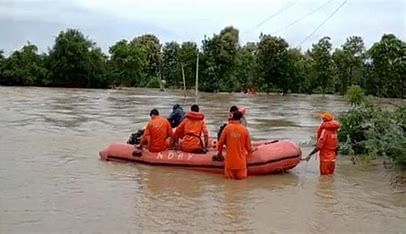
Why in News?
Karnataka government has gone to the Supreme Court against the Union government for the release of drought relief funds from NDRF.
- This dispute follows previous disagreements over tax devolution and other allocations.
Extent of Drought in Karnataka
- Rainfall Deficit: Karnataka faced significant rainfall deficits during the last monsoon, worsening the drought and impacting agriculture.
- Drought Conditions: 223 out of 236 taluks in Karnataka are declared drought-hit, leading to significant crop losses.
- Compensation Request: Karnataka seeks Rs 18,171 crores from the Centre to address drought damages.
Karnataka's Writ Petition to the Supreme Court
- Legal Action: Karnataka's petition under Article 32 aims to address the Union government's alleged inaction regarding financial assistance for drought management.
- Basis of Petition: The delay in fund release is argued to violate fundamental rights under Articles 14 and 21 of the Constitution concerning equality and personal liberty.
National Disaster Response Fund (NDRF)
- NDRF: Established under the Disaster Management Act, 2005, NDRF supports State Disaster Response Funds during severe disasters when SDRF funds are insufficient.
- Eligibility: NDRF provides immediate relief for natural calamities like cyclones, droughts, earthquakes, fires, floods, and more.
- Management: NDRF funds are managed in "Public Accounts" under "Reserve Funds not bearing interest," with auditing by the Comptroller and Auditor General of India (CAG).
Disaster Relief for Indian States
- Definition: The 2005 Disaster Management Act doesn't define disasters specifically but includes events disrupting life beyond people's coping abilities.
- Funding: The 15th Finance Commission introduced a new allocation methodology based on factors like past spending, risk exposure, and vulnerability.
- Institutional Setup: States have State Disaster Relief Funds (SDRF) with the Centre contributing a significant portion of funds.
- Procedure: States seeking assistance must provide damage details, followed by assessments by various teams before relief release from NDRF.
Source: NDTV
Krishi Integrated Command and Control Centre (ICCC)
Subject: Science and Technology
Why in News?
The Krishi Integrated Command and Control Centre (ICCC) was recently inaugurated at Krishi Bhavan in New Delhi by the Agriculture Minister.
Key Features of Krishi ICCC
- The ICCC integrates various IT applications and platforms to offer actionable insights and support informed decision-making.
- It utilizes 8 large LED screens to display essential information like crop yields, production, drought status, cropping patterns, and trends in graphical formats.
- The dashboard provides insights, alerts, and feedback on agriculture schemes, programs, projects, and initiatives, empowering stakeholders with comprehensive information.
Data Utilized by Krishi ICCC
- The ICCC utilizes geospatial information from multiple sources including Soil Survey, India Meteorological Department (IMD), Digital Crop Survey, Krishi MApper, Unified Portal for Agricultural Statistics (UPAg), and General Crop Estimation Survey (GCES).
Objectives and Functions
- Comprehensive Monitoring: The ICCC aims to monitor the farm sector comprehensively by consolidating geospatial data from various sources such as remote sensing, weather data, soil surveys, and market intelligence.
- Decision Support: Integrated visualization aids quick decision-making by policymakers and stakeholders through real-time data and analysis.
Farmer-Specific Advisories and Practical Applications
- Individual Farmer Advisories: The ICCC can generate personalized advisories for farmers using apps like Kisan e-Mitra, employing AI and machine learning for tailored recommendations.
- Practical Applications:
- Farmer's Advisory: Customized advisories on crop selection and agricultural practices based on GIS-based soil mapping, soil health card data, and weather information.
- Drought Actions: Proactive measures to address drought impact through the correlation of yield data with weather patterns.
- Crop Diversification: Identification of regions suitable for diversified cropping to optimize agricultural productivity.
- Farm Data Repository: The Krishi Decision Support System (K-DSS) serves as an agricultural data repository, aiding evidence-based decision-making and customized advisories for farmers.
- Validation of Yield: Ensuring accuracy and reliability of yield data captured through various applications.
Source: Indian Express
|
38 videos|5283 docs|1116 tests
|


